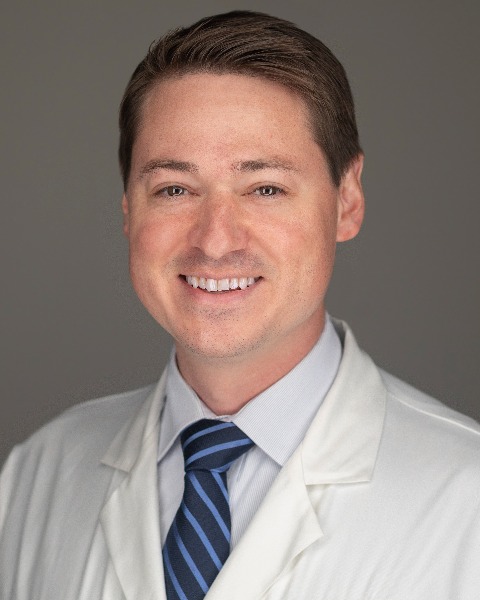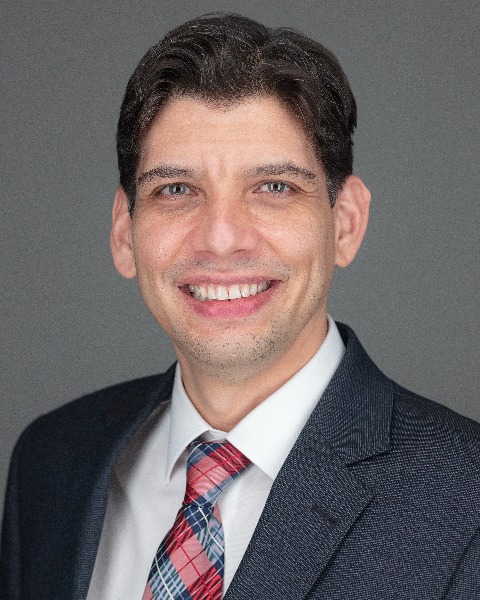Upper GI
CME
97: Long-term Oncologic Outcomes Following Pathologic Complete Response (pCR) for Esophageal Cancer

Andrew J. Sinnamon, MD, MSCE
Instructor of GI Surgery
Moffitt Cancer Institute
Tampa, Florida, United StatesDisclosure(s): No financial relationships to disclose

Andrew J. Sinnamon, MD, MSCE
Instructor of GI Surgery
Moffitt Cancer Institute
Tampa, Florida, United StatesDisclosure(s): No financial relationships to disclose
- SS
Samir Saeed, BS
Student Research Assistant
Brown University, United StatesDisclosure information not submitted.
- RM
Rutika Mehta, MD, MPH
Assistant Member, GI Medical Oncology
Moffitt Cancer Center, United StatesDisclosure information not submitted.
- SN
Samer Naffouje, MD
Assistant Professor of Surgery
Cleveland Clinic Foundation
Cleveland, Ohio, United StatesDisclosure information not submitted.
- DP
David T. Pointer, MD
Surgical Oncologist
Ochsner Health, United StatesDisclosure information not submitted.
- JD
Justin A. Drake, MD
Fellow in Complex General Surgical Oncology
Moffitt Cancer Center, United StatesDisclosure information not submitted.
- GL
Gregory Lauwers, MD
Senior Member, GI Pathology
Moffitt Cancer Center, United StatesDisclosure information not submitted.
- RP
Russell F. Palm, MD
Assistant Member, GI Radiation Oncology
Moffitt Cancer Center, United StatesDisclosure information not submitted.
- JF
Jessica M. Frakes, MD
Associate Member, GI Radiation Oncology
Moffitt Cancer Center, United StatesDisclosure information not submitted.
- SH
Sarah E. Hoffe, MD
Senior Member, GI Radiation Oncology
Moffitt Cancer Center, United StatesDisclosure information not submitted.
- JB
Jobelle J. Baldonado, MD
Assistant Member, Thoracic Surgical Oncology
Moffitt Cancer Center, United StatesDisclosure information not submitted.
- JF
Jacques P. Fontaine, MD
Senior Member, Thoracic and GI Surgical Oncology
Moffitt Cancer Center, United StatesDisclosure information not submitted.

Jose M. Pimiento, MD (he/him/his)
Associate Member
H. Lee Moffitt Cancer Center and Research Institute
Tampa, Florida, United StatesDisclosure information not submitted.
Abstract Presenter(s)
First Author(s)
Author(s)
Neoadjuvant chemoradiation is the current standard for management of locally advanced esophageal cancer based on clinical trial data demonstrating favorable outcomes. pCR rates vary by histology: about 25% for adenocarcinoma (AC) and as high as 50% for squamous cell carcinoma (SCC). Outcomes for patients with pCR are less well defined.
Methods: Patients with clinical stage II-III esophageal AC or SCC of the middle/lower thoracic esophagus or gastroesophageal junction who received neoadjuvant chemoradiation and curative intent resection were identified from a prospectively maintained institutional database. Recurrence free survival (RFS) and overall survival (OS) were analyzed using the Kaplan Meier method and Cox proportional hazard modeling. Patients that died within 30-day postoperative period were excluded from analyses.
Results:
Among 747 patients who underwent esophagectomy after neoadjuvant therapy, there were 277 cases with pCR (37.1%). pCR was more commonly seen with SCC than AC (n=52/91, 57.1% versus n=225/656, 34.3%; p< 0.001). Nine cases (3.4%) had perioperative death and 5 had inadequate follow up data leaving 263 cases for study. With median follow up 124 months, there were 64 (24.3%) recurrences after pCR with the majority occurring in AC (n=58) compared to SCC (n=6). The majority of recurrences (n=50/64, 78.1%) occurred within 2 years. Overall, 2-year RFS was 79.6% (95% CI 73.4-84.1%), 5-year RFS was 74.4% (68.2-79.6%), and 10-year RFS was 71.3% (64.6%-77.0%). For AC, 2-year RFS was 78.2% (71.8-83.3%) compared to 86.1% (71.6-93.5%) for SCC.
In multivariable analysis, AC histology (HR 2.68, p=0.024), clinical T3/T4 stage (HR 5.35, p=0.001), clinical nodal disease (HR 2.23, p=0.020), and fewer lymph nodes resected (HR 1.04, p=0.011) were all associated with worse RFS. A threshold of 15 lymph nodes was identified as an optimal cutpoint for the prognostic value of ypN0 (HR 2.14 for < 15 nodes, p=0.011). Age, sex, race, BMI, tumor location, tumor differentiation and LVI were not associated with RFS.
Median OS was 83 months for AC and 102 months for SCC. Histology, cT stage, and cN stage were not prognostic for OS. Prognostic factors for OS were older age (HR 1.03, p=0.003) and lower BMI (HR 0.96, p=0.013).
Conclusions: After achieving pCR for esophageal cancer, recurrence is more common in AC than SCC, with 2-year RFS approximately 78% for AC and 86% for SCC. Clinical T and N stage prior to neoadjuvant therapy are associated with recurrence. In the setting of clinically positive nodes prior to neoadjuvant therapy, examination of at least 15 negative nodes portends a better prognosis after pCR.
Learning Objectives:
- Define the long-term recurrence rates of esophageal cancer after resection with neoadjuvant therapy with pathologic complete response (pCR)
- Identify patients with low resected lymph node count and initially clinically suspicious nodes who are at higher risk of esophageal cancer recurrence despite pCR
- Counsel patients in postoperative setting regarding risk factors for esophageal cancer recurrence after resection with pCR
